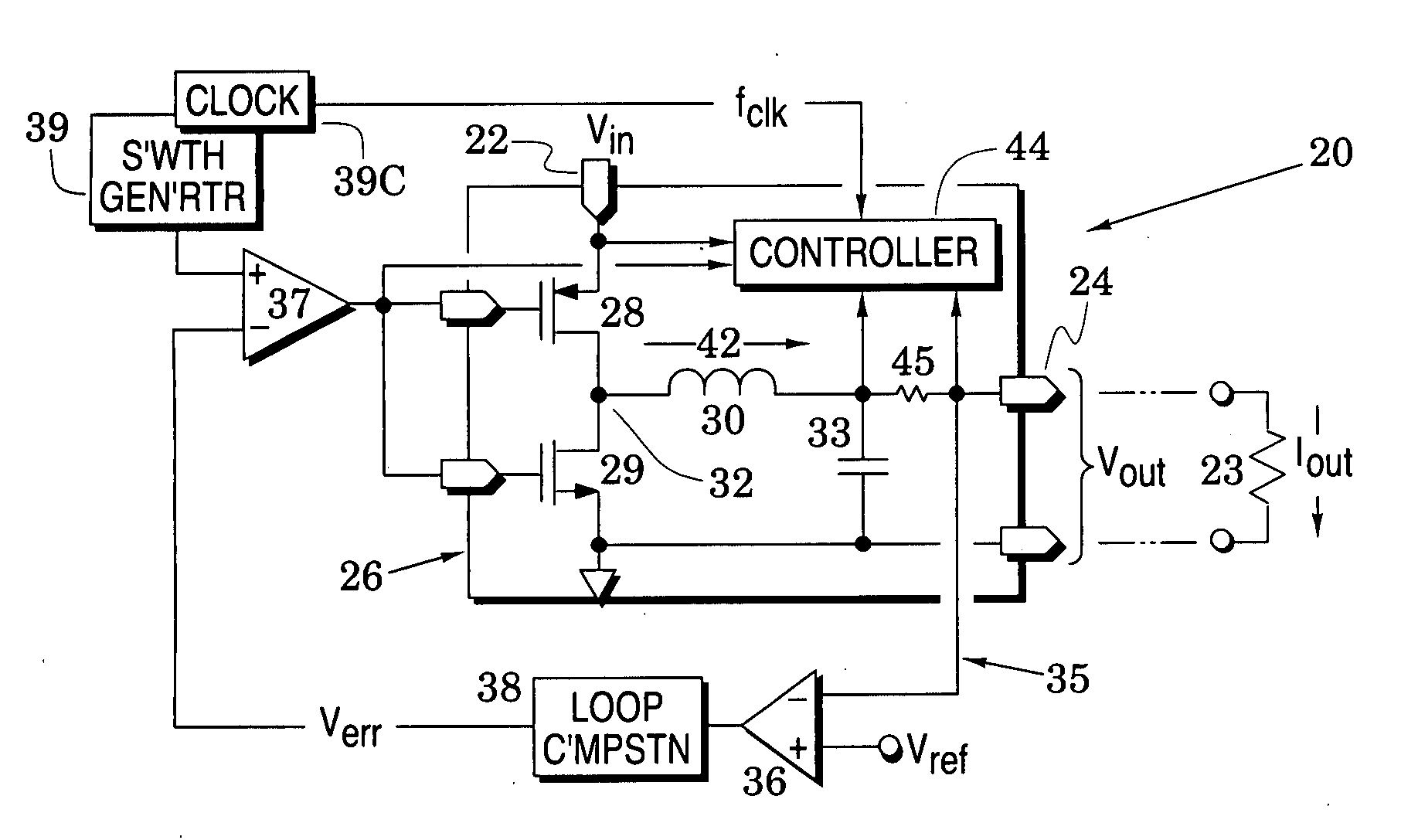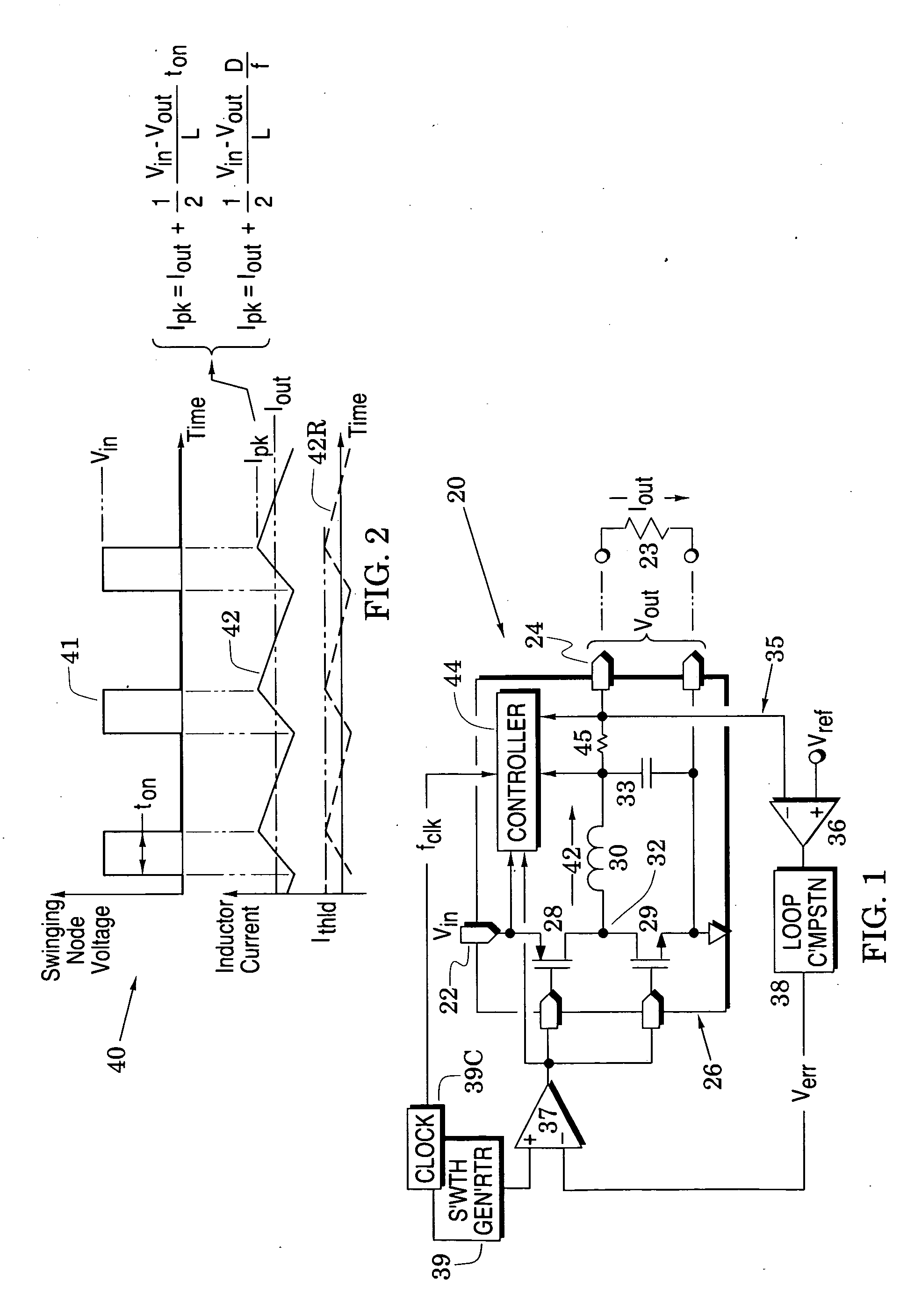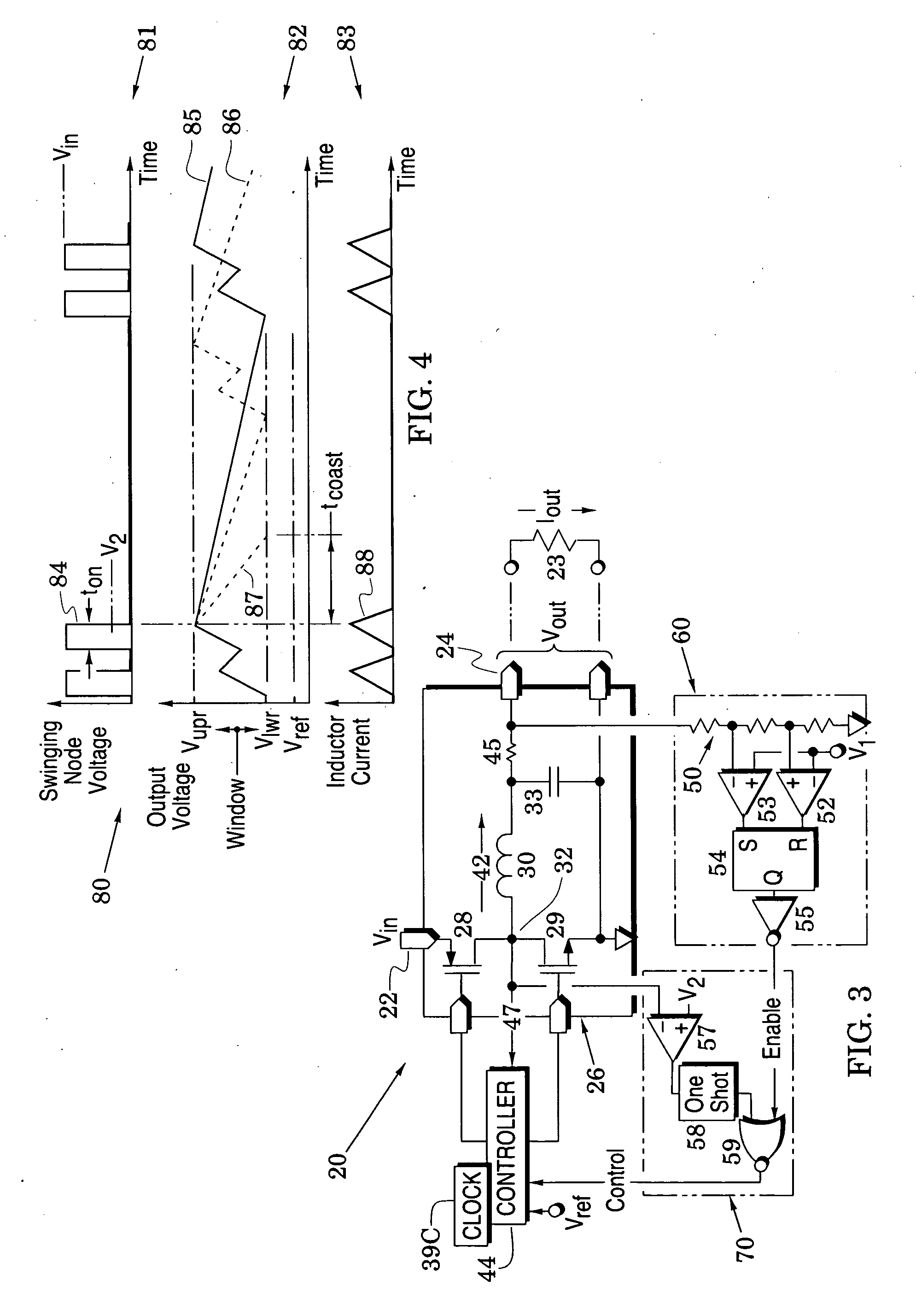Switching converters with efficiently-controlled mode transitions
a technology of switching converters and efficiently controlled modes, applied in the direction of electric variable regulation, process and machine control, instruments, etc., can solve the problems of conduction loss and switching loss, loss limitation, and loss of conduction loss
- Summary
- Abstract
- Description
- Claims
- Application Information
AI Technical Summary
Problems solved by technology
Method used
Image
Examples
embodiment 20
[0015]In particular, FIG. 1 illustrates a switching converter system embodiment 20 that receives an input voltage Vin at an input port 22 and, in response, generates a controlled output voltage Vout across a load 23 at an output port 24 (wherein the load is symbolically indicated by a resistor). The system includes a buck converter 26 that is formed with control and synchronous transistors 28 and 29, an inductor 30, and a load capacitor 33. The sources of the control and synchronous transistors are respectively coupled to the input port 22 and to system ground. The capacitor is coupled across the output port and the inductor is coupled between the capacitor and the drains of the control and synchronous transistors to thereby form a swinging node 32.
[0016]A feedback loop 35 is formed with differential amplifier 36, comparator 37 and loop compensation 38. The differential amplifier 36 and the loop compensation 38 respond to the difference between the output voltage Vout and a referenc...
first embodiment
[0031]Before describing FIG. 4, it is noted that FIG. 3 shows that the switching converter system 20 is configured so that the controller 44 can sense when the inductor current 42 has dropped substantially to ground. In a first embodiment, voltages across the small resistor 45 can be provided to the controller 44 so that it receives a reliable measure of the output current Iout. In another embodiment, the controller 44 can monitor the voltage of the swinging node 32 (e.g., with a sense line 47) and compare this voltage to ground. The sense line 47 essentially enables the controller 44 to form a zero-current detector. Yet other embodiments can be used to provide the controller 44 with knowledge of when the inductor current 42 has reached substantially zero.
[0032]FIG. 4 is a graph 80 that illustrates processes in the converter system of FIG. 3 during the PFM operational mode. The graph has a first portion 81 which shows voltages at the swinging node 32 of FIG. 3 and has a second porti...
PUM
 Login to View More
Login to View More Abstract
Description
Claims
Application Information
 Login to View More
Login to View More - R&D
- Intellectual Property
- Life Sciences
- Materials
- Tech Scout
- Unparalleled Data Quality
- Higher Quality Content
- 60% Fewer Hallucinations
Browse by: Latest US Patents, China's latest patents, Technical Efficacy Thesaurus, Application Domain, Technology Topic, Popular Technical Reports.
© 2025 PatSnap. All rights reserved.Legal|Privacy policy|Modern Slavery Act Transparency Statement|Sitemap|About US| Contact US: help@patsnap.com



